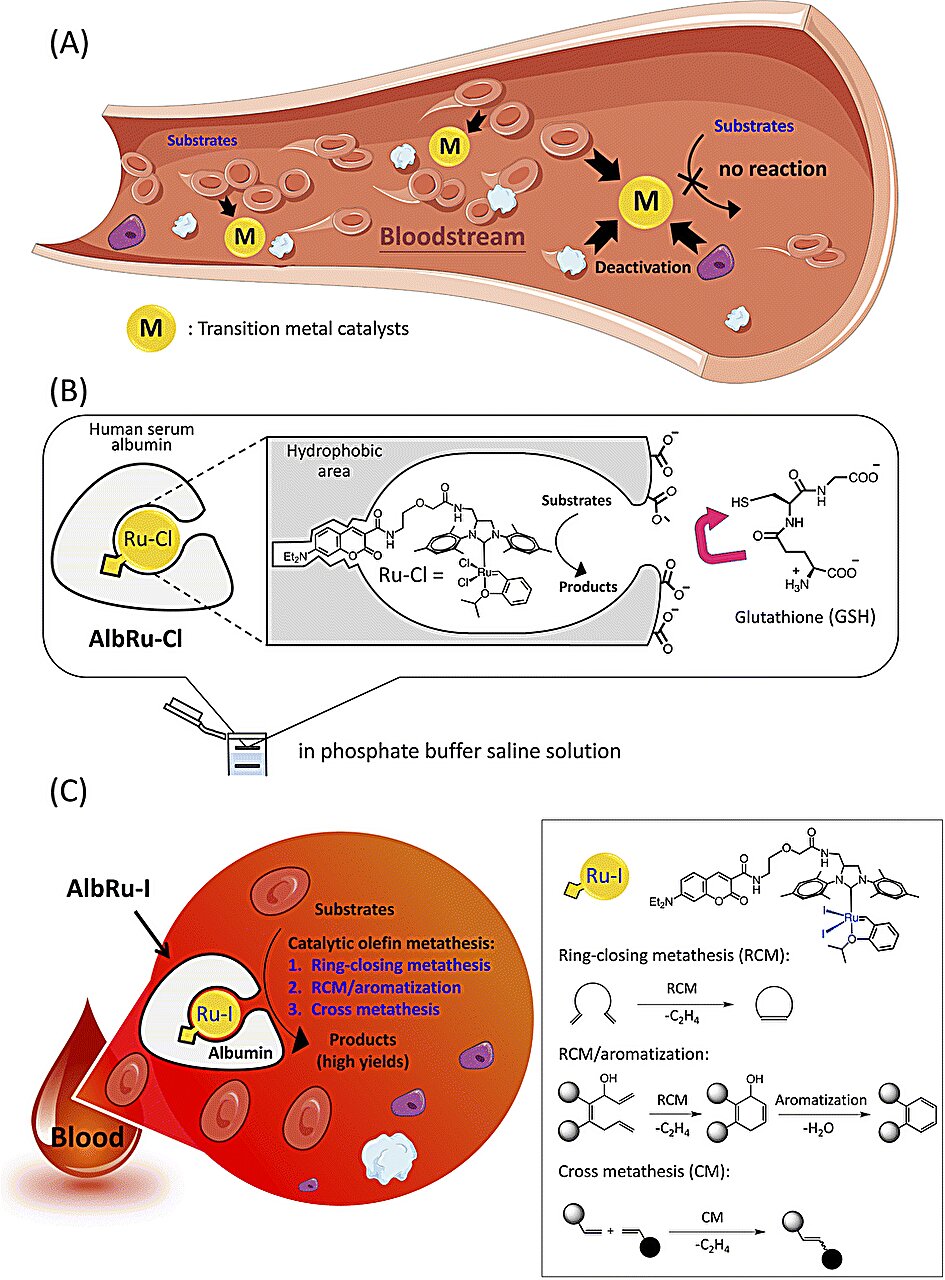

A highly active catalyst capable of synthesizing drug molecules within the body has been developed by RIKEN chemists. In mice, an anticancer drug assembled near tumors using the injected catalyst suppressed tumor growth.
The paper is published in the journal Chemical Science.
In conventional medicines delivered by injection or pill, the active drug molecule circulates throughout the body, flooding not only the target site but also healthy tissues. The resulting side effects can be so serious that they can cause permanent damage and force treatment to be stopped.
Assembling drug molecules at target sites within the body could make them more effective while minimizing their side effects.
“The direct synthesis of drugs in the body would enable drugs to treat diseases without causing side effects in healthy tissues,” says Katsunori Tanaka, chief scientist of the RIKEN Biofunctional Synthetic Chemistry Laboratory. “That’s why we need a biocompatible biocatalysis system to perform drug synthesis near target sites in the body.”
The team targeted drug assembly in the body using a catalytic chemical reaction called olefin metathesis. “Olefin metathesis is one of the most efficient methods for constructing carbon–carbon double bonds for synthesizing drugs,” explains Tanaka. “If it could be worked out in the body, it should enable us to synthesize many different types of drugs.”
Most chemical catalysts are rapidly deactivated by biomolecules in the bloodstream. To overcome this problem, the team wrapped a ruthenium-based olefin metathesis catalyst inside a protective protein called human serum albumin.
Tanaka’s team had previously shown that a ruthenium chloride complex embedded inside human serum albumin—forming a catalytic assembly called an artificial metalloenzyme—was somewhat active in blood. Now, they have shown that switching to a ruthenium iodide complex produces a far superior artificial metalloenzyme.
At low catalyst concentrations, the new albumin-based ruthenium iodide (AlbRuI) catalyst catalyzed three types of olefin metathesis reactions in blood at high yield.
“AlbRuI also showed robust stability for 24 hours in blood,” says Tanaka. “This expands the biocompatibility of artificial metalloenzymes and opens the door for developing general, metal-based artificial metalloenzymes for catalytic reactions in blood.”
The team also showed that a low dose of cancer-targeting AlbRuI significantly inhibited tumor growth in mice through localized synthesis of an antitumor drug.
The team intends to expand the use of their catalyst. “We hope to use AlbRuI to synthesize a variety of bioactive molecules,” says Tanaka. “Then we could use it to treat not only cancer but also other diseases without side effects.”
More information:
Igor Nasibullin et al, Catalytic olefin metathesis in blood, Chemical Science (2023). DOI: 10.1039/D3SC03785A
Citation:
Catalyst makes drugs inside the body to minimize side effects (2023, December 8)
retrieved 8 December 2023
from https://phys.org/news/2023-12-catalyst-drugs-body-minimize-side.html
This document is subject to copyright. Apart from any fair dealing for the purpose of private study or research, no
part may be reproduced without the written permission. The content is provided for information purposes only.





